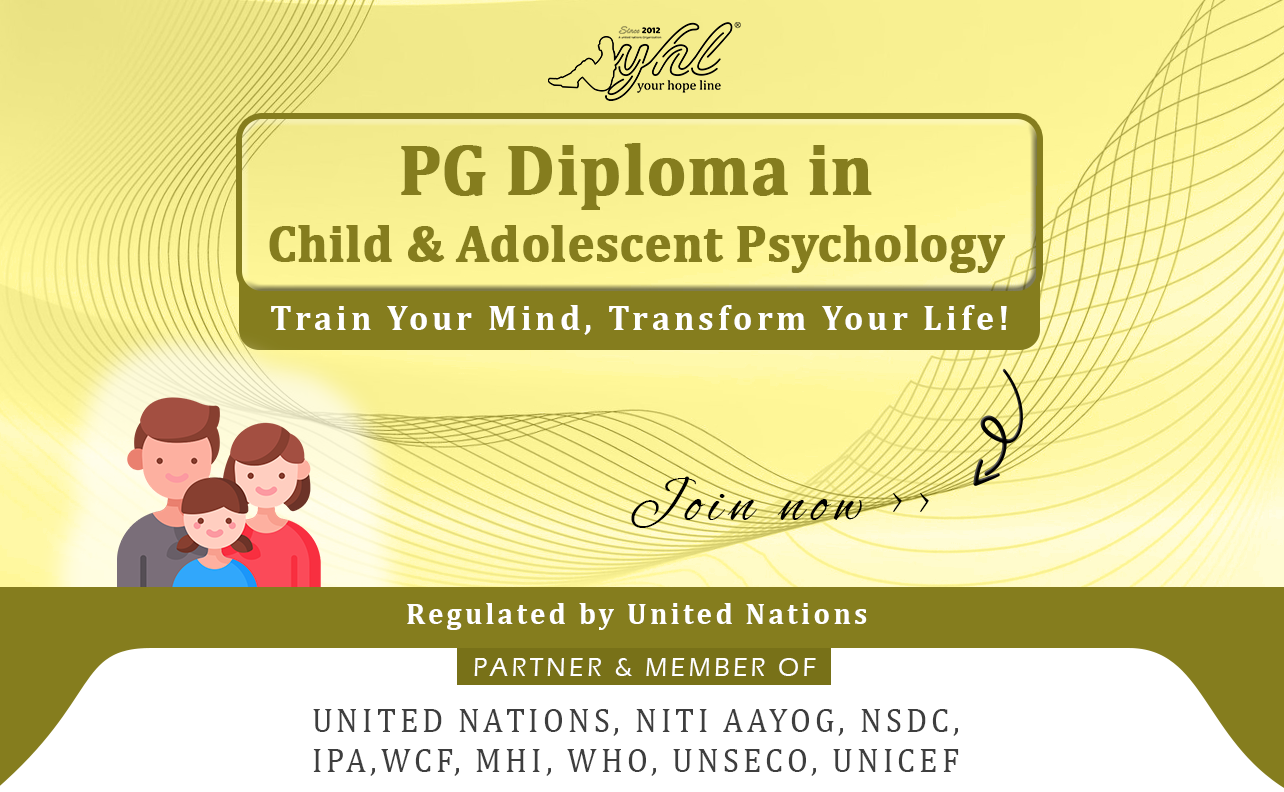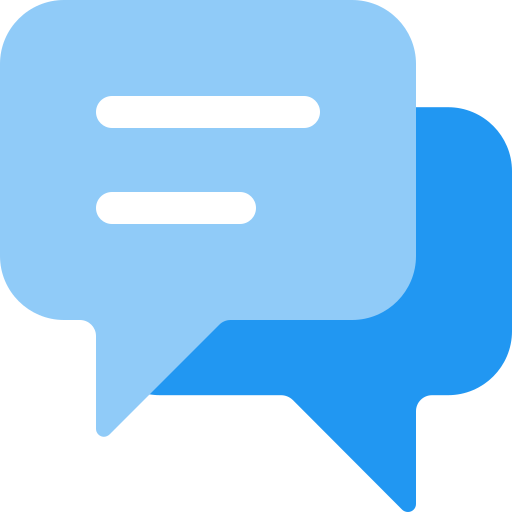
Pg Diploma in Child & Adolescent Psychology – Your Hope Line
United Nations Recognized | Niti Aayog Recognized | ISO 29993:2017

United Nations Recognized

Niti Ayog Recognized

ISO
29993:2017
29993:2017

Registration Card – Available

Duration – Fexible

Printed Notes – Available

Certificate on Merit – not available

Community Access – Lifetime

Payment Mode – One time
- Duration : 1 years
- Mode : Self-Placed
- Price : ₹25,000
₹30,000 - CoM : not available
Child Psychology
- 1. Introduction to IQ tests
- 2. Developmental theories
- 3. Role of a child psychologist
- 4. Child psychology simplified
- 5. Development areas of a child
- 6. Attachment styles with parents
- 7. Factors in child’s development
- 8. Language & cognitive development
- 9. Reasons for learning child psychology
- 10. Role of parents
- 11. Child psychopathology
- 12. Scales & screening tools
- 13. IQ tests & its application
- 14. Genetics and abnormalities
- 15. Parents skill training modulation
- 16. Child & adolescent psychotherapy
- 17. Child Psychology Activity one
- 18. Child Psychology Activity two
Parenting Coach
- 1. Science of Parenting - What drives it
- 2. Traditional Vs. Modern Parenting - What changed
- 3. 8 Parenting Mistakes - They innocently make
- 4. Parents' X-factors - Parents as individuals
- 5. Parents' Report Card - How much they scored
- 6. 5 Step Parenting Coaching - Universally practiced
- 7. 7 Modern parenting challenges & solutions
- 8. Growing with the child - Dynamic relationship
- 9. 6 ideal parenting practices – Safe parenting
- 10. Handling Mistakes - Anger, Ego, Guilt, social pressure
- 11. Having difficult conversation with child
- 12. Practicing - Sharing, Letting go, Right expectation
Adolescent Counseling
- 1. Historical Perspectives on Adolescence
- 2. Contemporary Definitions and Conceptualizations
- 3. Cultural Variations in Defining Adolescence
- 4. Psychoanalytic Theories
- 5. Cognitive Theories
- 6. Socio-cultural Theories
- 7. Biological Theories
- 8. Physical Changes during Adolescence
- 9. Cognitive Development during Adolescence
- 10. Social and Emotional Development
- 11. Identity Formation and Self-Concept
- 12. Peer Pressure and Social Influence
- 13. Risk-Taking Behaviors
- 14. Mental Health Issues
- 15. Substance Abuse and Addiction
- 16. Parent-Adolescent Relationship
- 17. Family Systems Theory
- 18. Communication Patterns within Families
- 19. Impact of Family Structure on Adolescent Development
- 20. Conflict Resolution and Family Therapy Approaches
- 21. Person-Centered Counseling
- 22. Psychodynamic Therapy
- 23. Gestalt Therapy
- 24. Narrative Therapy
- 25. Cognitive-Behavioral Therapy (CBT) for Adolescents
- 26. Dialectical Behavior Therapy (DBT) for Adolescents
- 27. Solution-Focused Brief Therapy (SFBT) with Adolescents
- 28. Group Counseling and Support Programs for Adolescents
- 29. Digital Technology and Social Media Influence
- 30. Gender and Sexual Identity Exploration
- 31. Trauma and Resilience in Adolescence
- 32. Academic and career Counseling
Rehabilitation
- 1. Assessment of Case Formulation
- 2. Substance Abuse Disorder
- 3. Sampling
- 4. Assessment of Disability
- 5. Cognitive Behavioral Therapy
- 6. Art Therapy
- 7. Research Design
- 8. Sports Therapy
Clinical Psychology
- 1. What is Clinical Psychology
- 2. Requirements to be a Clinical Psychologist
- 3. Activities of a Clinical Psychologist
- 4. Evidence-Based Practice in Psychology
- 5. Ethics and Code of Conduct
- 6. Categorical and Dimensional Approaches
- 7. The Diagnostic And Statistical Manual Of Mental Disorders (DSM) System
- 8. The International Statistical Classification of Diseases and Related Health Problems (ICD)
- 9. Comorbidity
- 10. Ethnic and Cultural Considerations in Diagnosis
- 11. Key Concepts in Assessment
- 12. Clinical Interviews
- 13. Assessment of Stress
- 14. Personality Tests
- 15. Intelligence Tests
- 16. Behavioral and Cognitive Assessment
- 17. Direct Observation of Behavior
- 18. Self-Monitoring
- 19. Cognitive-Style Questionnaires
- 20. Neurobiological Assessment
- 21. Brain Imaging: "Seeing" the Brain
- 22. Neuropsychological Assessment
- 23. Psychophysiological Assessment
- 24. Generalized Anxiety Disorder- - Causes & Treatment
- 25. Panic Disorder - Causes & Treatment
- 26. Phobia - Causes & Treatment
- 27. Social Anxiety Disorder - Causes & Treatment
- 28. Trauma- and Stressor-Related Disorders - Causes & Treatment
- 29. Obsessive-Compulsive and Related Disorders- Causes & Treatment
- 30. Somatic symptom and related disorders and dissociative disorders- Causes & Treatment
- 31. Mood Disorders Suicide - Causes & Treatment
- 32. Eating Disorders - Causes & Treatment
- 33. Sleep–Wake Disorders- Causes & Treatment
- 34. Schizophrenia spectrum and other psychotic disorders- Causes & Treatment
- 35. Attention-Deficit/Hyperactivity Disorder- Causes & Treatment
- 36. Specific Learning Disorder - Causes & Treatment
- 37. Autism Spectrum Disorder - Causes & Treatment
- 38. Intellectual Disability (Intellectual Developmental Disorder)- Causes & Treatment
- 39. Prevention of Neurodevelopmental Disorders
- 40. Alcohol-Related Disorders- Sedative, Hypnotic, or Anxiolytic-Related Disorders
- 41. Stimulant-Related Disorders
- 42. Causes of Substance-Related Disorders
- 43. Treatment of Substance-Related Disorders
- 44. Gambling Disorder
- 45. Impulse-Control Disorders
- 46. Intermittent Explosive Disorder
- 47. Kleptomania
- 48. Pyromania
- 49. Cluster A Personality Disorders
- 50. Cluster B Personality Disorders
- 51. Cluster C Personality Disorders